Getting The Ventilation Right In Old – Or New – Livestock Buildings
Getting the ventilation right in old – or new – livestock buildings is critical to animal health and productivity. But finding the right balance between fresh air and a chilling draught can be difficult. As a result, cows and youngstock can suffer from health challenges like respiratory diseases, mastitis and poor growth rates.
According to Jamie Robertson, research fellow at Aberdeen University, more than half of our livestock buildings are not fit for purpose – and even new builds are often flawed in their design. “There are three key things we need to pay attention to in buildings: Moisture, fresh air, and air speed.”
The first place to reduce moisture is on the floor, says Mr Robertson. “If the floor is your problem, don’t expect better ventilation to sort it out. Most farmers allow far too much rainwater to get dirty, which means more slurry to handle, and a greater bio-security risk. Wet and dirty floors also result in higher bedding costs, foot problems and mastitis. Fix your gutters and downpipes, and harvest or divert water away from collecting areas.”
As warm moist air rises, all livestock sheds need a hole in the roof – usually along the ridge. “As a rule of thumb, you need 0.04sq m per calf, and 0.1sq m per adult or fast growing youngster. Plus you need twice as much air inlet on the side walls – the aim is to have fresh air delivery to as many parts of the building as possible.”
Solid walls up to cow height will protect animals from draughts – and air inlets should be diffuse to prevent wind cutting through the house, he adds. “Space boarding should never have more than an inch gap, and choose the best design for local weather conditions. If you can’t open up the wall, you may need to install fans and ducts to get the required air flow.”
The building use must also be considered. “There are additional problems when housing calves – you need fresh air to help prevent pneumonia, but too much air flow means they will get cold.” Many new buildings are too large for calf housing, so farmers should install ventilated kennels to keep the calves warm, says Mr Robertson. “Often, old calf sheds are ideal because they are low and warm – you just need to open up some gaps in the walls and roof to improve ventilation.”
Case Study
Arwel Davies milks 250 Friesian Holstein cows with his wife Mary and son Hywel at Pantswllt Farm, Talgarreg, Ceredigion, and has reared youngstock in a number of different buildings. “We have old cow sheds at the home farm, where calves stay for the first three months,” he says. “The sheds are ideally located, but aren’t ideal in design, so we have to use forced ventilation to try and prevent pneumonia.
About 10 years ago, Mr Davies expanded his dairy and beef enterprise, and put up a 120ft x 60ft barn at a nearby rearing unit. “We are now rearing about 150 replacements and beef crossbreds, plus 40 dairy bulls a year. We move the calves up to the unit at three months old, and move them into the cubicle building as yearlings.”
Having used wooden boarding in the past, he decided to try a perforated metal wall called Highlight instead, to improve light and ventilation at a similar cost and lifespan. “I have been very pleased with it. It gives a better flow of air, and makes the building light and airy as well. You can see straight through it to the outside.”
Although the vented wall is on the South West face, 900ft up and in an exposed position, it does protect against the wind and rain, he adds. “We have got a five-foot concrete wall with 10 foot of Highlight above it. We were surprised at how little wetness gets in – the cubicles get damp maybe two or three days over the entire winter. We’ve never had any health problems – the youngstock do very well up there.”
Mr Davies had previously tried rearing youngstock in a large clearspan building – with limited success. “It was too big – it just didn’t work. We tried making a building within a building with straw bales, but the calves just didn’t do well there.”
About three years ago he replaced 180ft of walling on the Eastern side of the cubicle shed at home. “We had used Ventair, but replaced it with Highlight, which has brightened up the building and improved the air flow. The better the ventilation the healthier the animals – I think Highlight is a big step forward.”

